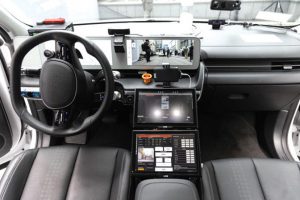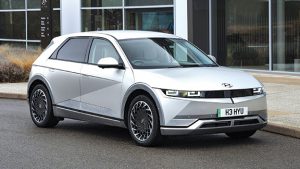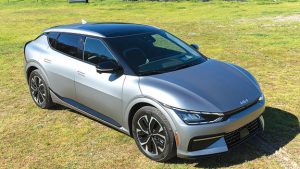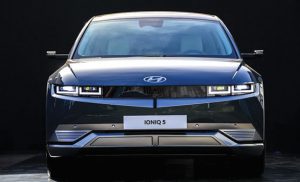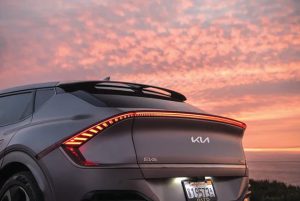Bloomberg
Pipe down for a second Elon, the hottest things in the auto industry — the most electric electrics — now come from Hyundai Motor Co. and Kia Corp.
Earlier this year, the South Korean carmakers rolled out two new battery-powered cars — the Hyundai Ioniq 5 and its sibling, the Kia EV6 — which promptly tore up the sales charts, passing the Nissan Leaf, Chevrolet Bolt and every other electric vehicle on the market not made by Tesla. In the US this year through May, Hyundai and Kia sold 21,467 of these two machines, besting even the white-hot Ford Mustang Mach-E, which was snapped up by 15,718 drivers.
In just a few months, Hyundai and Kia’s new models zoomed past other EVs in the market.
Tesla still sells far more cars, but it took the company a decade to deliver as many electric vehicles as Hyundai and Kia have managed in a few short months. Even Musk has been impressed.
Granted, Hyundai is no startup. And the design of the current hits started about six years ago, according to Steve Kosowski, manager of long range strategy at Kia America. At the time, the Chevrolet Bolt had just hit the market and Kia considered a car similar in size and scope. Ultimately, Kosowski and company green lit something far larger, sportier and swankier — at a slightly higher price.
EV adoption is picking up in the US, thanks to a surge in both climate concern and gasoline prices. And though there’s a run on battery-powered vehicles, there still aren’t many to choose from. Of the 30 or so models for sale on the US market, only a handful can be had for less than $45,000 and most of those are relatively small, dated cars like the Nissan Leaf.
The Ioniq 5 and EV6 both offer the cargo space of a small SUV, the size and shape of vehicle that has taken over US garages of late. Both cars ride on the same modular platform, incorporate the same motors and batteries and post similar speed specifications. They are tricked out with screens and charge at some of the fastest rates in the industry, adding almost 16 miles of range in a minute under ideal conditions. They also offer a couple features that are novel in the space: pedals to adjust the regenerative braking and
bi-directional power.
Starting around $40,000, they are drawing buyers with smaller budgets who otherwise may have bought a starter sedan, says Yoon at Edmunds.
“These two cars have come in kind of at the right price and the right size for a lot of buyers,†Yoon said. “And I think there’s a level of inherent trust with a big manufacturer getting in the game with a mainstream.â€
So far, roughly three in four EV6 buyers were previously driving a car from another brand, according to Kia, and only one in 10 has previously owned a plug-in vehicle. The current waitlist for the EV6 is about six months long and the average transaction price is a few thousand dollars above the sticker price, according to Bloomberg Intelligence, which suggests most buyers are willing to pay a premium.
Kosowski said the new Hyundai products are capitalizing, in part, on “Tesla fatigue,†as the first-mover sedans and SUVs become ubiquitous even beyond coastal states. Also, Hyundai owners are sticking with what they know — of those trading in a Hyundai or Kia recently, about 60% stayed with the brand, according to Edmunds.
Hyundai plans to launch a new battery-powered car every year for the rest of the decade and is spending $16.5 billion to boost EV production in South Korea. By 2030, the automaker wants to claim 12% of the global EV market, some 3.2 million cars and trucks.
 The Gulf Time Newspaper One of the finest business newspapers in the UAE brought to you by our professional writers and editors.
The Gulf Time Newspaper One of the finest business newspapers in the UAE brought to you by our professional writers and editors.
